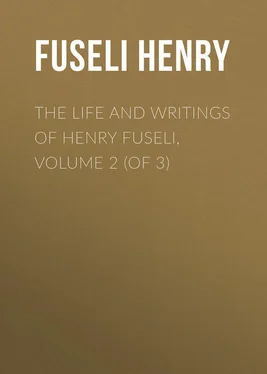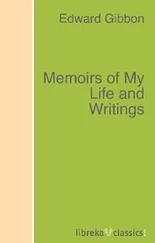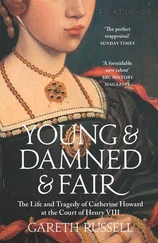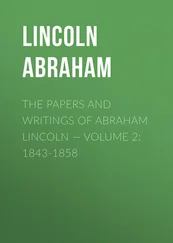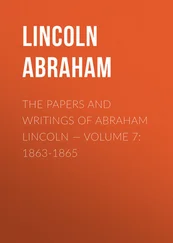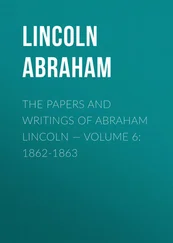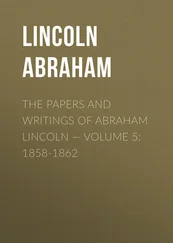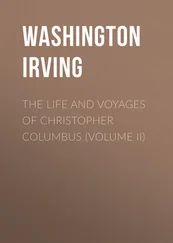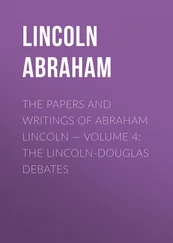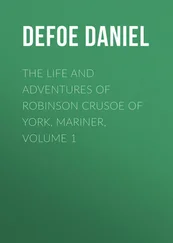Henry Fuseli - The Life and Writings of Henry Fuseli, Volume 2 (of 3)
Здесь есть возможность читать онлайн «Henry Fuseli - The Life and Writings of Henry Fuseli, Volume 2 (of 3)» — ознакомительный отрывок электронной книги совершенно бесплатно, а после прочтения отрывка купить полную версию. В некоторых случаях можно слушать аудио, скачать через торрент в формате fb2 и присутствует краткое содержание. Жанр: visual_arts, foreign_antique, foreign_prose, на английском языке. Описание произведения, (предисловие) а так же отзывы посетителей доступны на портале библиотеки ЛибКат.
- Название:The Life and Writings of Henry Fuseli, Volume 2 (of 3)
- Автор:
- Жанр:
- Год:неизвестен
- ISBN:нет данных
- Рейтинг книги:5 / 5. Голосов: 1
-
Избранное:Добавить в избранное
- Отзывы:
-
Ваша оценка:
- 100
- 1
- 2
- 3
- 4
- 5
The Life and Writings of Henry Fuseli, Volume 2 (of 3): краткое содержание, описание и аннотация
Предлагаем к чтению аннотацию, описание, краткое содержание или предисловие (зависит от того, что написал сам автор книги «The Life and Writings of Henry Fuseli, Volume 2 (of 3)»). Если вы не нашли необходимую информацию о книге — напишите в комментариях, мы постараемся отыскать её.
The Life and Writings of Henry Fuseli, Volume 2 (of 3) — читать онлайн ознакомительный отрывок
Ниже представлен текст книги, разбитый по страницам. Система сохранения места последней прочитанной страницы, позволяет с удобством читать онлайн бесплатно книгу «The Life and Writings of Henry Fuseli, Volume 2 (of 3)», без необходимости каждый раз заново искать на чём Вы остановились. Поставьте закладку, и сможете в любой момент перейти на страницу, на которой закончили чтение.
Интервал:
Закладка:
To Luca Signorelli, of Cortona, 30 30 Luca Signorelli died at Cortona 1521, aged 82.
nature more than atoned for the want of those advantages which the study of the antique had offered to Andrea Mantegna. He seems to have been the first who contemplated with a discriminating eye his object, saw what was accident and what essential; balanced light and shade, and decided the motion of his figures. He foreshortened with equal boldness and intelligence, and thence it is, probably, that Vasari fancies to have discovered in the last judgment of Michael Angelo traces of imitation from the Lunetta, painted by Luca, in the church of the Madonna, at Orvieto; but the powers which animated him there, and before at Arezzo, are no longer visible in the Gothic medley with which he filled two compartments in the chapel of Sixtus IV. at Rome.
Such was the dawn of modern art, when Lionardo da Vinci 31 31 Lionardo da Vinci is said to have died in 1517, aged 75, at Paris.
broke forth with a splendour which distanced former excellence: made up of all the elements that constitute the essence of genius, favoured by education and circumstances, all ear, all eye, all grasp; painter, poet, sculptor, anatomist, architect, engineer, chemist, machinist, musician, man of science, and sometimes empiric, 32 32 The flying birds of paste, the lions filled with lilies, the lizards with dragons' wings, horned and silvered over, savour equally of the boy and the quack. It is singular enough that there exists not the smallest hint of Lorenzo de Medici having employed or noticed a man of such powers and such early celebrity; the legend which makes him go to Rome with Juliano de Medici at the access of Leo X., to accept employment in the Vatican, whether sufficiently authentic or not, furnishes a characteristic trait of the man. The Pope passing through the room allotted for the pictures, and instead of designs and cartoons, finding nothing but an apparatus of distillery, of oils and varnishes, exclaimed, Oimè, costui non è per far nulla, da che comincia a pensare alla fine innanzi il principio dell' opera! From an admirable sonnet of Lionardo, preserved by Lomazzo, he appears to have been sensible of the inconstancy of his own temper, and full of wishes, at least, to correct it. Much has been said of the honour he received by expiring in the arms of Francis I. It was indeed an honour, by which destiny in some degree atoned to that monarch for his future disaster at Pavia.
he laid hold of every beauty in the enchanted circle, but without exclusive attachment to one, dismissed in her turn each. Fitter to scatter hints than to teach by example, he wasted life, insatiate, in experiment. To a capacity which at once penetrated the principle and real aim of the art, he joined an inequality of fancy that at one moment lent him wings for the pursuit of beauty, and the next, flung him on the ground to crawl after deformity: we owe him chiaroscuro with all its magic, we owe him caricature with all its incongruities. His notions of the most elaborate finish and his want of perseverance were at least equal: – want of perseverance alone could make him abandon his cartoon destined for the great council-chamber at Florence, of which the celebrated contest of horsemen was but one group; for to him who could organize that composition, Michael Angelo himself ought rather to have been an object of emulation than of fear: and that he was able to organize it, we may be certain from the remaining imperfect sketch in the 'Etruria Pittrice;' but still more from the admirable print of it by Edelinck, after a drawing of Rubens, who was Lionardo's great admirer, and has said much to impress us with the beauties of his Last Supper in the refectory of the Dominicans at Milano, the only one of his great works which he carried to ultimate finish, through all its parts, from the head of Christ to the least important one: it perished soon after him, and we can estimate the loss only from the copies that survive.
Bartolomeo della Porta, or di S. Marco, the last master of this period, 33 33 Frà Bartolomeo died at Florence 1517, at the age of 48.
first gave gradation to colour, form, and masses to drapery, and a grave dignity, till then unknown, to execution. If he were not endowed with the versatility and comprehension of Lionardo, his principles were less mixed with base matter and less apt to mislead him. As a member of a religious order, he confined himself to subjects and characters of piety; but the few nudities which he allowed himself to exhibit, show sufficient intelligence and still more style: he foreshortened with truth and boldness, and whenever the figure did admit of it, made his drapery the vehicle of the limb it invests. He was the true master of Raphael, whom his tuition weaned from the meanness of Pietro Perugino, and prepared for the mighty style of Michael Angelo Buonarotti.
Sublimity of conception, grandeur of form, and breadth of manner are the elements of Michael Angelo's style. 34 34 Michael Angelo Buonarotti, born at Castel-Caprese in 1474, died at Rome 1564, aged 90.
By these principles he selected or rejected the objects of imitation. As painter, as sculptor, as architect, he attempted, and above any other man succeeded, to unite magnificence of plan and endless variety of subordinate parts with the utmost simplicity and breadth. His line is uniformly grand: character and beauty were admitted only as far as they could be made subservient to grandeur. The child, the female, meanness, deformity, were by him indiscriminately stamped with grandeur. A beggar rose from his hand the patriarch of poverty; the hump of his dwarf is impressed with dignity; his women are moulds of generation; his infants teem with the man; his men are a race of giants. This is the 'terribil via' hinted at by Agostino Carracci, though perhaps as little understood by the Bolognese as by the blindest of his Tuscan adorers, with Vasari at their head. To give the appearance of perfect ease to the most perplexing difficulty, was the exclusive power of Michael Angelo. He is the inventor of epic painting, in that sublime circle of the Sistine chapel which exhibits the origin, the progress, and the final dispensations of theocracy. He has personified motion in the groups of the cartoon of Pisa; embodied sentiment on the monuments of St. Lorenzo, unravelled the features of meditation in the Prophets and Sibyls of the Sistine chapel; and in the Last Judgement, with every attitude that varies the human body, traced the master-trait of every passion that sways the human heart. Though as sculptor, he expressed the character of flesh more perfectly than all who went before or came after him, yet he never submitted to copy an individual; Julio the second only excepted, and in him he represented the reigning passion rather than the man. 35 35 Like Silanion – 'Apollodorum fecit, fictorem et ipsum, sed inter cunctos diligentissimum artis et inimicum sui judicem, crebro perfecta signa frangentem, dum satiare cupiditatem nequit artis, et ideo insanum cognominatum. Hoc in eo expressit, nec hominem ex ære fecit sed Iracundiam.' Plin. l. xxxiv. 7.
In painting he contented himself with a negative colour, and as the painter of mankind, rejected all meretricious ornament. 36 36 When M. Angelo pronounced oil-painting to be Arte da donna e da huomini agiati e infingardi , a maxim to which the fierce Venetian manner has given an air of paradox, he spoke relatively to fresco: it was a lash on the short-sighted insolence of Sebastian del Piombo, who wanted to persuade Paul III. to have the Last Judgement painted in oil. That he had a sense for the beauties of oil-colour, its glow, its juice, its richness, its pulp, the praises which he lavished on Titiano, whom he called the only painter, and his patronage of Frà Sebastian himself, evidently prove. When young, M. Angelo attempted oil-painting with success; the picture painted for Angelo Doni is an instance, and probably the only entire work of the kind that remains. The Lazarus, in the picture destined for the cathedral at Narbonne, rejects the claim of every other hand. The Leda, the cartoon of which, formerly in the palace of the Vecchietti at Florence, is now in the possession of W. Lock, Esq. was painted in distemper (a tempera); all small or large oil-pictures shown as his, are copies from his designs or cartoons, by Marcello Venusti, Giacopo da Pontormo, Battista Franco, and Sebastian of Venice.
The fabric of St. Peter, scattered into infinity of jarring parts by Bramante and his successors, he concentrated; suspended the cupola, and to the most complex gave the air of the most simple of edifices. Such, take him all in all, was M. Angelo, the salt of art: sometimes he no doubt had his moments of dereliction, deviated into manner, or perplexed the grandeur of his forms with futile and ostentatious anatomy: both met with armies of copyists; and it has been his fate to have been censured for their folly.
Интервал:
Закладка:
Похожие книги на «The Life and Writings of Henry Fuseli, Volume 2 (of 3)»
Представляем Вашему вниманию похожие книги на «The Life and Writings of Henry Fuseli, Volume 2 (of 3)» списком для выбора. Мы отобрали схожую по названию и смыслу литературу в надежде предоставить читателям больше вариантов отыскать новые, интересные, ещё непрочитанные произведения.
Обсуждение, отзывы о книге «The Life and Writings of Henry Fuseli, Volume 2 (of 3)» и просто собственные мнения читателей. Оставьте ваши комментарии, напишите, что Вы думаете о произведении, его смысле или главных героях. Укажите что конкретно понравилось, а что нет, и почему Вы так считаете.
